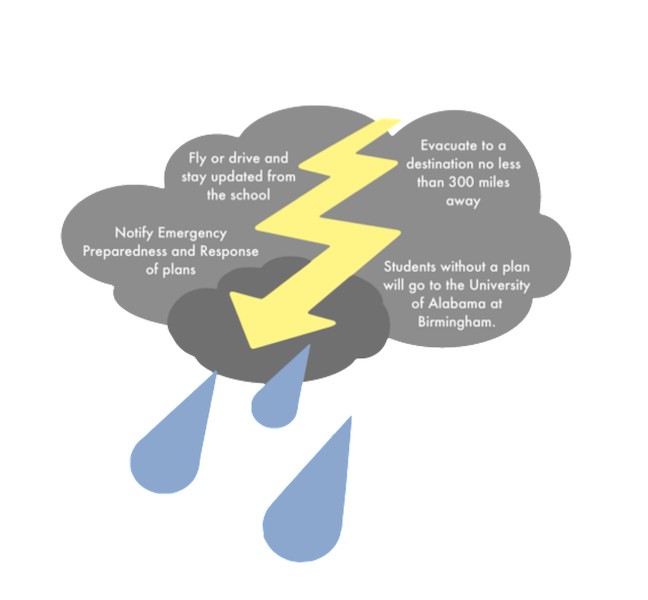Hurricane season calls for student evacuation plans
Stop, drop and roll for a fire. Duck and cover in an earthquake. Seek shelter during a thunderstorm. But what does a Tulane student do in a hurricane?
According to Norris Yarbrough, assistant vice president of Emergency Preparedness and Response, “Grab your go bag and go” is the best plan for a Tulane student.
Escaping and surviving a hurricane requires quick thinking, resourcefulness and, most importantly, a comprehensive plan. Though students now live in a time when weather radar is accessible to anyone with a smartphone and when anyone can be an amateur meteorologist, students may not be as ready as they think.
“Awareness and preparedness are two different things,” said Yarbrough.
According to Tulane’s Emergency Preparedness and Response website, students and their families should develop an emergency response plan ahead of a weather emergency.
Yarbrough advises students to notify Emergency Preparedness and Response of their plans using the Personal Safety Plan, which is available through Gibson and can be updated as needed. Additionally, students with disabilities can use this service to alert Emergency Preparedness and Response of any potential need for assistance in the event of an evacuation.
The University dictates that a “go bag” should include items such as non-perishable food, bottled water, clothes, a portable radio, a flashlight, batteries, a blanket and a container for water. These items are meant to be easily accessible in the event of a mandatory evacuation.
Students should evacuate to a destination no fewer than 300 miles away from New Orleans. Yarborough warned against staying too close to the Gulf.
“A hurricane is … either going to go to us, it’s going to go to Florida [or] it’s going to go to Texas,” Yarbrough said.
Yarbrough added that students should either fly or drive and pay close attention to updates from the school.
“If I were a student here and I had a car, I would … evacuate with my car. One, to avoid the airport madness, and number two, to protect my car,” Yarbrough said.
According to Yarbrough, students can expect to receive an alert from the University seven days prior to any projected landfall of a hurricane threatening New Orleans. After receiving the alert, students should purchase a boarding pass or fill their gas tanks, depending on their chosen evacuation method.
A boarding pass is necessary to enter Louis Armstrong New Orleans International Airport under a city-ordered evacuation. Students who cannot self-evacuate should communicate with their Resident Adviser, who will inform the school so those students can be shuttled to the University of Alabama at Birmingham.
Four days before projected landfall, the University will issue a mandatory evacuation, if needed. In this situation, Public Safety will establish a shuttle service to transport students to the airport or train stations. At this time, students evacuating by car should also depart the city. The University’s evacuation order will come at four days until landfall, while the city will issue an evacuation order at three days until landfall, giving students time to avoid traffic on roadways and congestion at the airport.
Students should prepare to be out of school for around seven days in the event of an evacuation. Precisely when students return to campus depends on a variety of factors, ranging from the level of flooding to the city’s recommendation.
Tulane’s Office of Emergency Preparedness and Response is currently working with the Student Safety Council to improve hurricane awareness and preparedness while partnering with student organizations. More information on hurricane preparedness can be found on the Emergency Preparedness and Response website.
Your donation will support the student journalists of Tulane University. Your contribution will allow us to purchase equipment and cover our annual website hosting costs.
















Leave a Comment